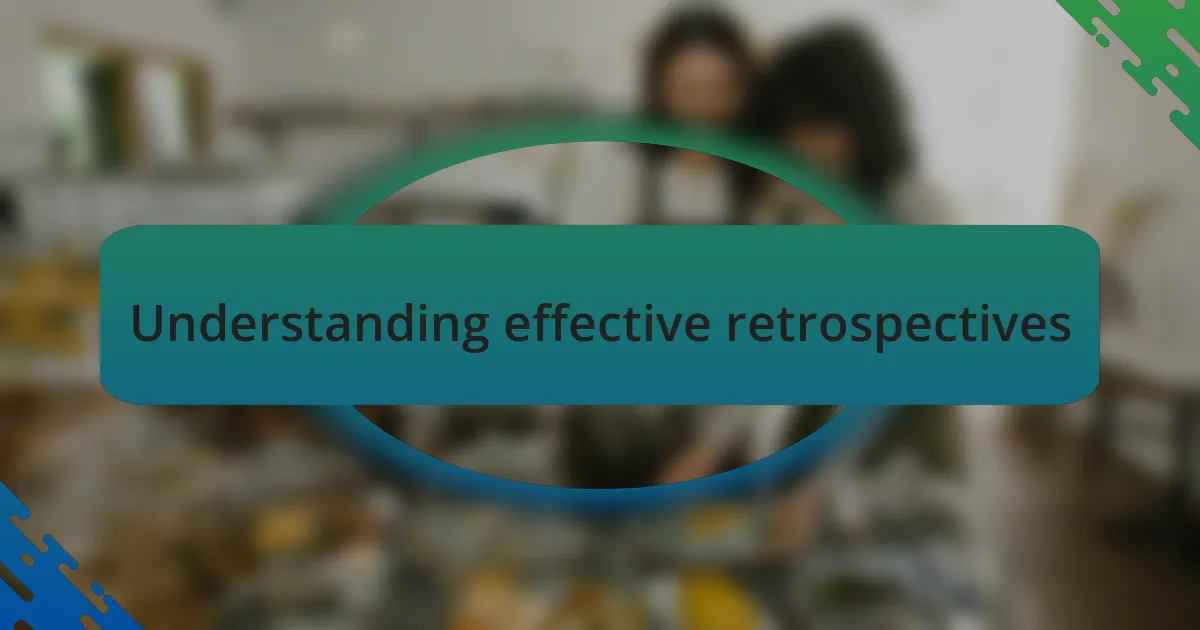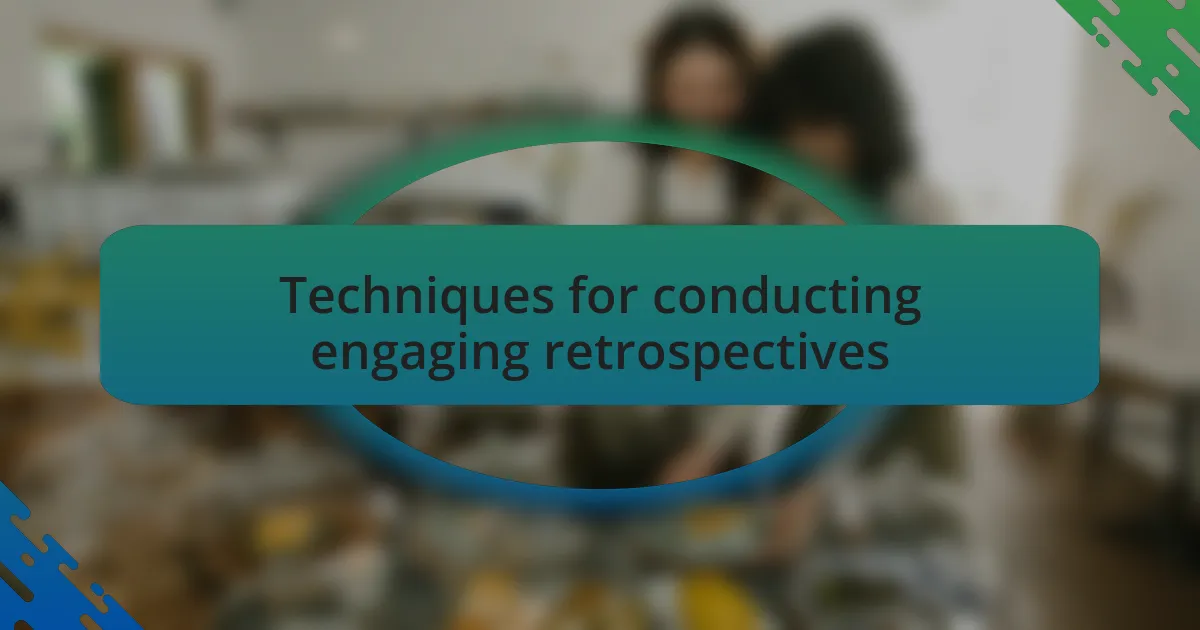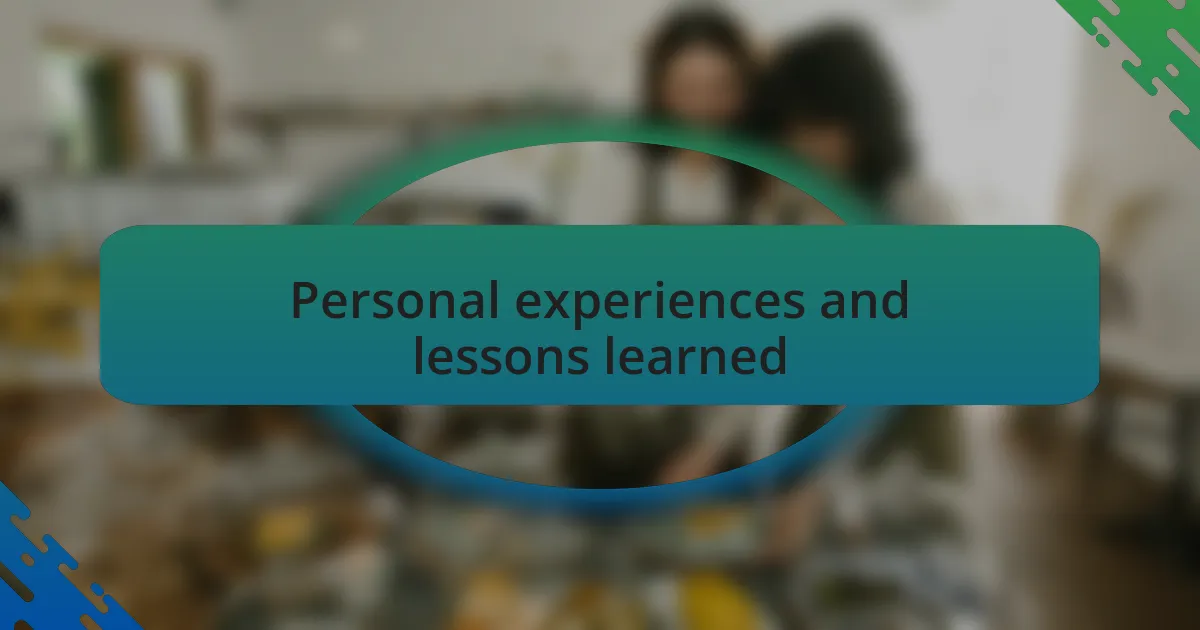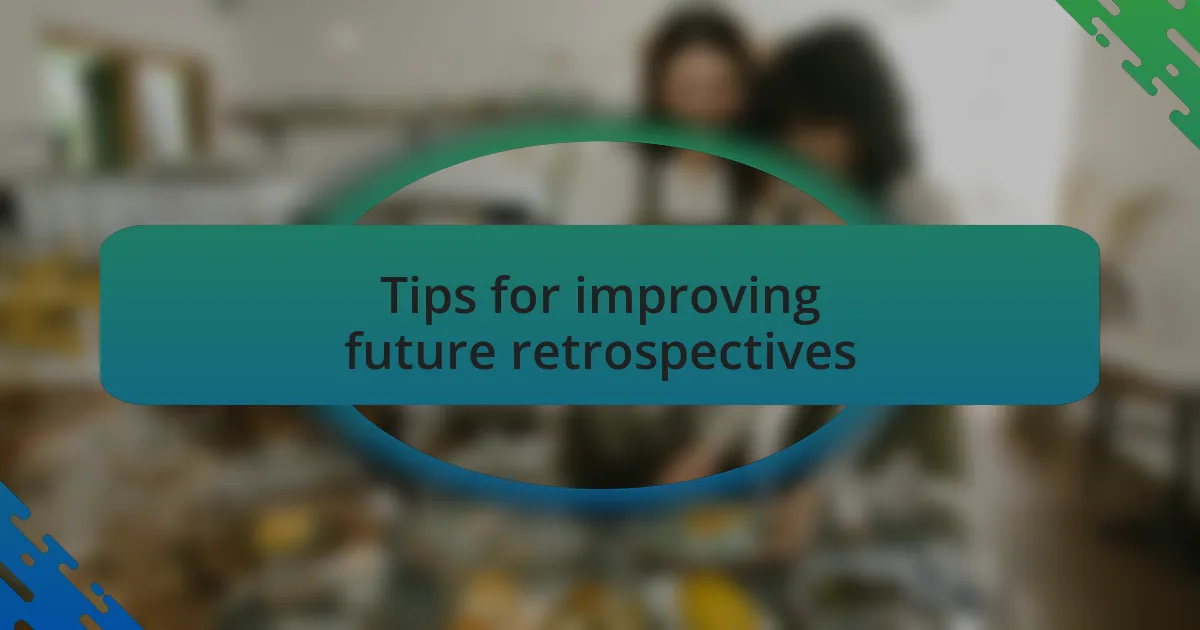Key takeaways:
- Fostering a safe environment encourages open communication and honest feedback during retrospectives.
- Recognizing and celebrating small victories boost team morale and reinforce teamwork.
- Utilizing visual aids and breaking into smaller groups enhances engagement and allows quieter members to contribute.
- Incorporating anonymity in feedback collection can lead to more honest and comprehensive discussions.

Understanding effective retrospectives
Effective retrospectives are crucial for continuous improvement in software development. I recall a session where team members were hesitant to speak up, creating an uncomfortable atmosphere that hindered genuine discussions. It made me realize the importance of fostering a safe environment where everyone feels valued and heard. Have you ever been in a situation where the fear of judgment stifles honest feedback? It’s essential to cultivate trust among team members to encourage meaningful conversations.
I’ve learned that effective retrospectives aren’t just about discussing what went wrong; they’re also opportunities to recognize successes. Celebrating small victories can energize the team and keep morale high. For instance, in one retrospective, we highlighted a particularly challenging feature we had delivered on time despite tight deadlines. This shift in focus to achievements infused the group with positivity and reinforced our sense of teamwork.
Another key aspect I’ve found valuable is keeping the retrospective structured yet flexible. Using techniques like Start-Stop-Continue can help guide the discussions while still allowing for unexpected insights to emerge. I remember a retrospective where a spontaneous discussion about communication tools led us to adopt a new platform that vastly improved our workflow. Isn’t it fascinating how a simple conversation can spark significant changes? This blend of structure and openness is what I believe makes retrospectives truly effective.

Techniques for conducting engaging retrospectives
Creating an engaging retrospective often requires the right blend of creativity and structure. One technique I’ve found particularly effective is using visual aids like charts or whiteboards. During one meeting, I introduced a flowchart that mapped out our project timeline. It sparked discussions and enabled teammates to visually connect the dots between their contributions and the project’s overall progress. Have you ever seen how visual tools can truly bring clarity to complex ideas?
Another technique worth exploring is breaking the team into smaller groups for part of the discussion. I remember using this method in a retrospective when the team felt overwhelmed by the number of topics to cover. By splitting into pairs, everyone had a chance to voice their thoughts more freely. It not only boosted participation but allowed quieter team members to shine, prompting insights we might have missed in a larger setting. Isn’t it interesting how sometimes, reducing the audience can amplify the conversation?
Incorporating a themed retrospective can also enhance engagement significantly. One time, we held a “nostalgia” theme where each member shared a favorite past project. It shifted the tone entirely, focusing on what we loved about our work. This exercise not only strengthened our bond but also reminded everyone of the shared purpose driving us forward. How could we transform our next session by tapping into emotional connections like this?

Personal experiences and lessons learned
Reflecting on my journey with retrospectives, I’ve learned that vulnerability can be a powerful catalyst for improvement. In one session, I decided to share my own missteps from the past sprint. This moment of honesty created a safe space for others to open up about their challenges, which was eye-opening. Have you ever considered how a simple act of sharing could change the dynamics within your team?
Another lesson I discovered involved timing and pacing. Initially, I rushed through discussions, thinking we had to cover everything in one sitting. However, I soon realized that allowing extra time for specific topics gave depth to our conversations. During a particularly intense retrospective, I paused to let a topic breathe, and it led to a breakthrough that reshaped our approach. Have you noticed how sometimes, taking a moment to reflect can uncover hidden insights?
Lastly, I found that celebrating small wins during retrospectives can significantly uplift team morale. At one point, we designated a section of our meetings to acknowledge individual contributions, leading to an unexpected surge in motivation. It was enlightening to witness how recognition fostered a culture of appreciation. When was the last time you acknowledged the hard work within your team, and how did it shift discussions forward?

Tips for improving future retrospectives
Encouraging feedback is a cornerstone of a successful retrospective. I remember a time when I implemented anonymous surveys before our meetings. At first, I was apprehensive about whether team members would share honestly without the pressure of being identified. The results surprised me; the feedback was more comprehensive, addressing issues that weren’t previously discussed. Have you ever thought about how anonymity could empower your team to speak freely?
Also, diversifying the retrospective format can energize discussions. One approach I found effective was introducing games or icebreakers that align with our topics. For instance, we tried a “mad, sad, glad” exercise, where each team member shared their feelings about the sprint. This simple yet engaging activity not only lightened the mood but also drew out deeper conversations on issues that mattered most to team members. Have you considered scheduling a fun activity to break the ice in your retrospectives?
Lastly, setting clear action items at the end of each retrospective is vital. In a previous project, I made it a habit to compile a list of actionable steps, assigning responsibilities to ensure accountability. This approach transformed our discussions into tangible outcomes, and as a result, I noticed a significant enhancement in our follow-through. Have you tracked the effectiveness of your action items in improving team performance?